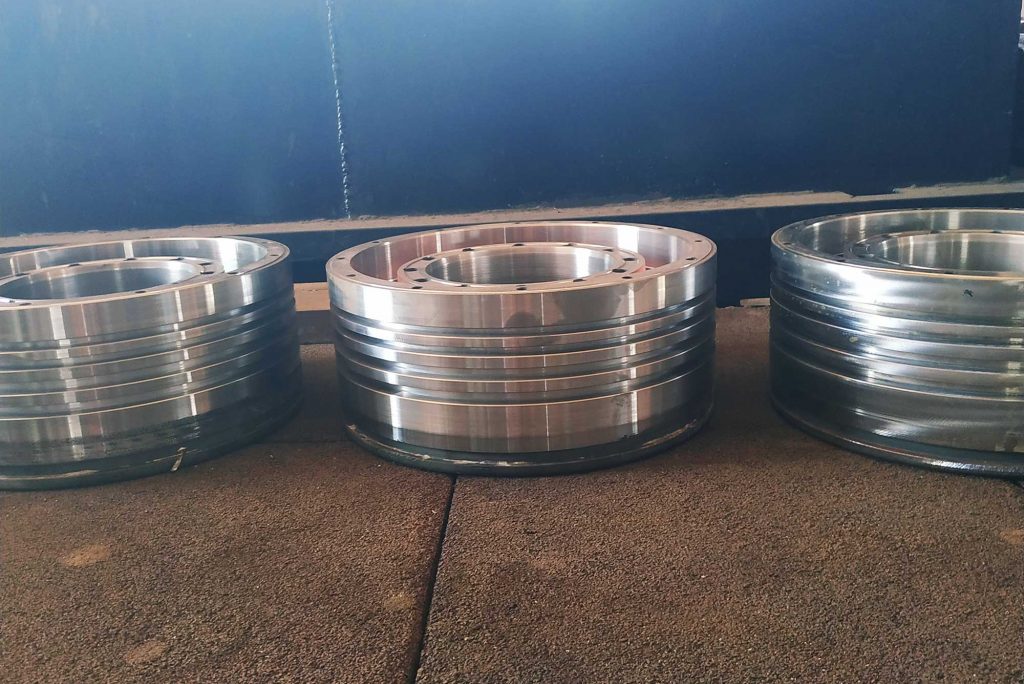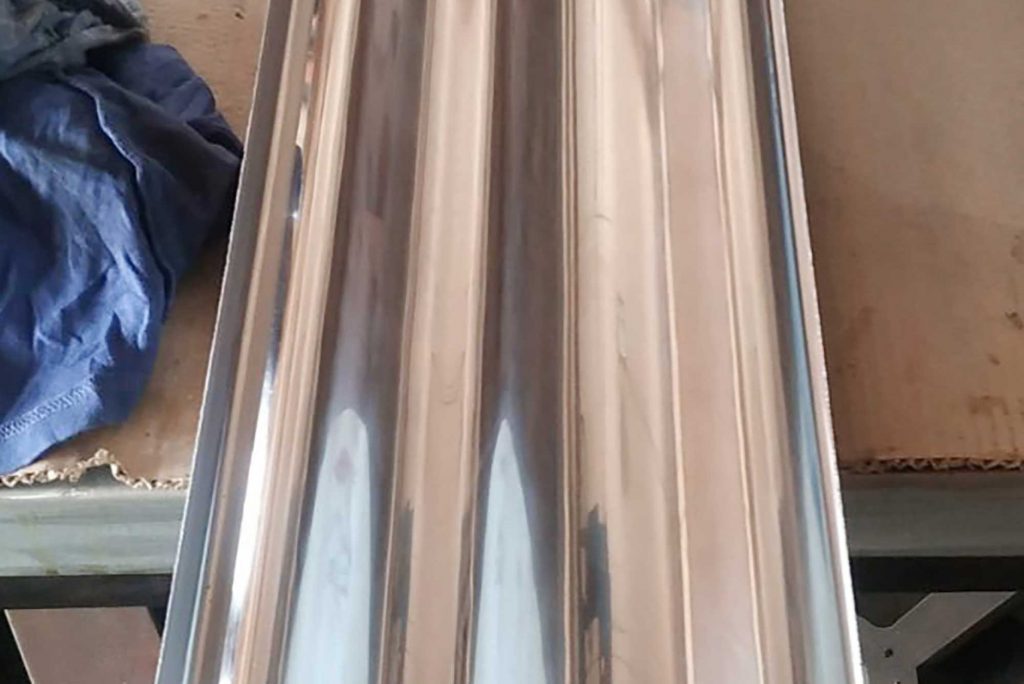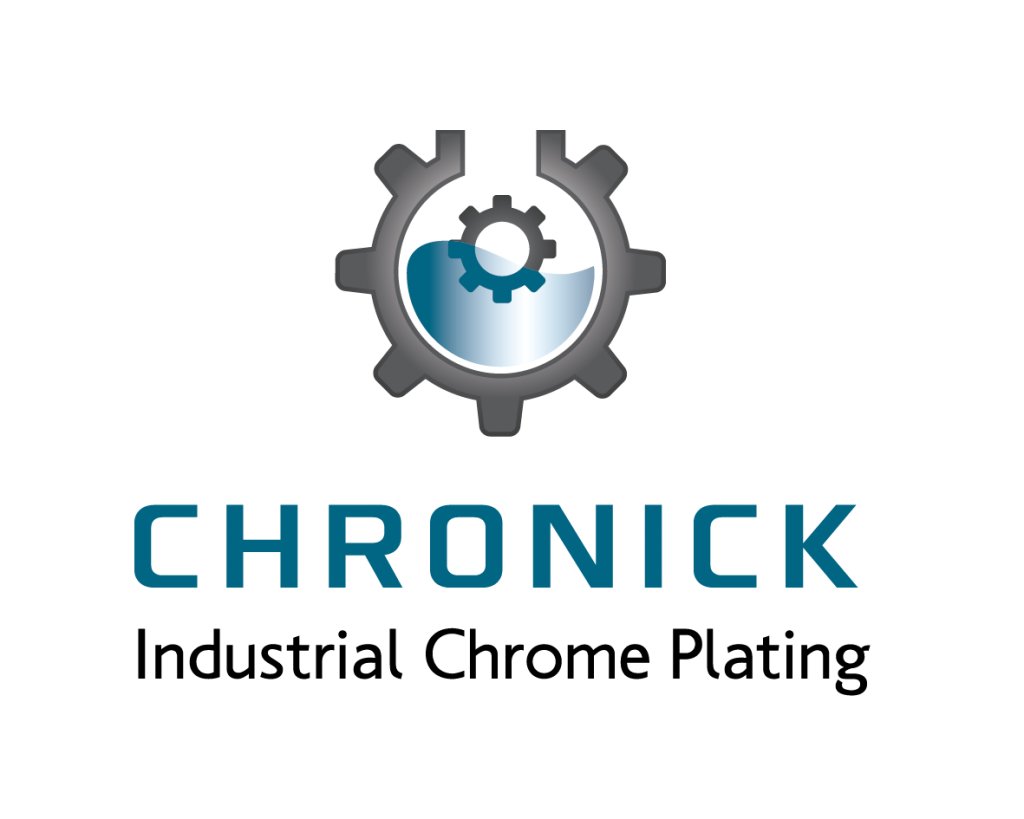INDUSTRIAL HARD CHROME PLATING
INDUSTRIAL HARD CHROME PLATING
The effectiveness of hard chrome plating (also known as “industrial chrome plating” in professional applications) is due to the unique combination of multiple properties and advantages available in no other material in the market. All these properties are crucial for successful applications.
Chrome may be deposited with exceptional adhesion on a variety of metals. Its hardness, resistance to wear and its low friction coefficient are properties that make chrome plating the ideal solution to almost all important industrial applications.
Electrolytic chrome deposition on material surfaces, especially on metallic surfaces, is the product of electric energy conducted via electrodes through a solution of mainly chromic acid; it is then transformed into chemical energy for the production of chromium to be deposited on the surface.
Frequently, in cases of destroyed or worn machine parts that are in no operational state, hard chrome plating may be used for the restoration of missing metal. These parts may then be restored to their original resistances. In most cases their functional life will certainly be extended.
Hard chrome may also be used for the improvement of resistance in new accessories or parts. The printing industry uses hard-chrome plated copper etching plates and cylinders for improved resistance to wear and abrasion. A variety of olive oil extraction equipment and production machinery uses many chrome-plated accessories in order to prolong their operative life and to reduce any costly off-time. Hydraulic equipment also uses chrome-plated shafts to extend their operational life in abrasive industrial settings.
The success of hard chrome coating in industrial applications is surely ascribed to a unique combination of properties; the most important of these properties are hardness, adhesion, resistance to wear, anti-abrasive properties and low friction coefficient values.
Hardness by itself may not be sufficient to secure the best possible application since various other hard materials and hardening processes are available. Extra-high hardness, combined with exceptionally good anti-abrasive resistance and a low friction coefficient, is essential: these are the unique surface properties that may render such beneficial results in a great number of hard chrome applications.
RESISTANCE TO WEAR - EFFECTS OF TEMPERATURE TO HARD CHROME PLATING

Wear in use may happen through contributing factors, such as friction, grinding, heat, and erosion.
Hard chrome has three distinctive features that render it resistant to wear: it exhibits hardness, high lubricity and resistance to the majority of abrasive industrial environments.
Its high hardness value enables chrome to resist friction. Its low friction coefficient means a minimized reactive force; therefore, lower heat is produced by parts rubbing against each other. Good anti-abrasion resistance means lower chemical deposition and reduction in oxidized metal by-products, resulting in lower grinding particle build-up. Due to these characteristics it is safe to say that hard chrome is “friendly” to most combinations of material coupling.
Chrome tends to become malleable at high temperatures (exceeding 550° C), thus maintaining a low friction coefficient to oxidation and abrasion and at the same time rendering optimal resistance to friction and chemical deposits. Even under these extreme conditions, when in contact to hot steel, chrome plating continues to exhibit significant resistance to wear.
Chrome is also appropriate for many cryogenic applications involving liquid nitrogen or liquid oxygen.
Applications under abrupt temperature fluctuations, such as those involved in the manufacture of plastics, have proven likewise to be effective in chrome plating.
HARDNESS OF INDUSTRIAL HARD CHROME PLATING

Industrial hard chrome may be deposited with a wide range of hardness depending on the bath parameters.
Average hardness ranges between 62 and 70 on the Rockwell C scale.
Depositions with thickness exceeding 25 μm are required prior to chrome’s attainment of its real hardness characteristics when used on metals.
ADVANTAGES OF MICROCRACKS ON HARD CHROME
Chrome may benefit from its crack patterns. In high-temperature applications or chrome-plated surface distortions due to surface tensions, these microcracks acts as surface shock absorption, thus allowing the surface to expand or be distorted without rupturing the bond between chrome and the base metal.
Additionally, cracks develop that provide exceptional lubricity when saturated with lubrication agents.
PROPERTIES AND BENEFITS OF INDUSTRIAL HARD CHROME PLATING
- Resistance to wear and friction
- Lubricity
- Hardness
- Adhesion
- Low friction coefficient on metal parts
- Restoration of small-sized parts
- Extension of equipment’s operational life, thus avoiding costly off-time
INDUSTRIES APPLYING HARD CHROME COATINGS :
The defense industry, Quarries / mines, Repair and construction machine shops, the food and beverage production business, Electric power companies, Cement/reinforced concrete industries,
Shipyards, Steel mills, Graphic arts businesses, Pharmaceuticals,
Metallurgy, the metal construction industry etc.
The data and the information presented here are based on our solid past experience. The literature is intended to guide in the use at your discretion. Our Company bears no responsibility in relation to this material.

